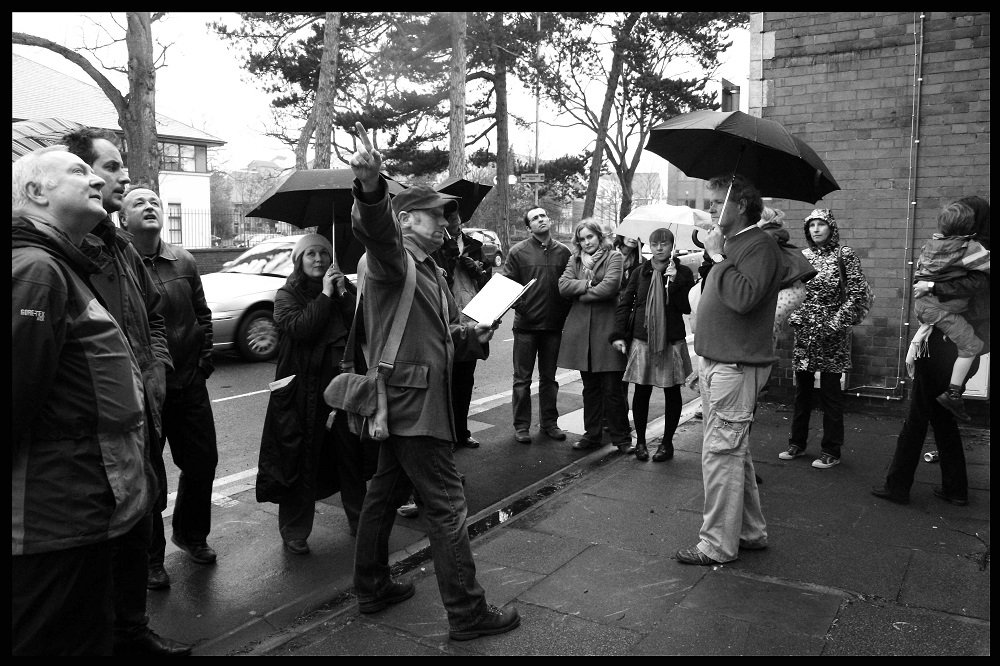Weekly digest – 13.05.20
As many of us are choosing to walk regularly as part of our daily lockdown exercise I thought I would touch upon the important role walking has played in artists thinking and practice, and how they have considered its meanings and concepts. Many philosophers have regarded walking as an essential tool for thinking. Friedrich Nietzsche asserted that: “All truly great thoughts are conceived by walking”, while Jean-Jacques Rousseau declared about himself that: “I can only meditate when I am walking. When I stop, I cease to think; my mind works only with my legs”. This intimate relationship between thinking and walking is also underlined by contemporary theorist Rebecca Solnit, who wrote “Walking, ideally, is a state in which the mind, the body, and the world are aligned’.
The meditative aspects of walking and its relationship to environment have led to artists and writers developing specific terms and practices in response. The idea of the ‘flâneur’ arose in 19th century France and originally meant ‘to wander with no purpose’. It was taken up in the poetry of Charles Baudelaire and then later in the writings of Walter Benjamin where the flaneur became an observer of modern urban life. This interest in the relationship to the urban environment through walking was again taken up by the Situationists who termed the idea of walking in landscape as a dérive “drift” which was put forward as a revolutionary strategy. This involved a study of the terrain of the city (psychogeography) and emotional disorientation, both of which lead to the potential creation of situations.
More recently the concept of the walking artist came to prominence in the 1960s through the practice of artists such as Richard Long, Hamish Fulton and Gilbert and George. They did not see art as the production of objects but rather something that began with a direct physical engagement with the landscape to which they would respond in different ways. Richard Long made a number of significant works involving walking such as A Line Made from Walking . Equally Hamish Fulton has devoted his artistic career to making work as a result of his extensive walks. Historically, the artists who have taken prominence in the history of walking art have been male but artist Alison Lloyd, has recently sought to address this both through her own practice and via recently completing a PHD at Loughborough looking at ‘Walking, Women and Art’.
I had the pleasure of meeting Hamish Fulton in 2007 when he was a guest speaker at a symposium we organised looking at the relationship between walking and ethnography. This was part of ‘A Weekend of Walking’ whereby we invited a mix of artists and poets whose practice involved walking to deliver new walking artworks across Loughborough. It showcased the different ways contemporary artists are engaging with walking from those that use the digital technology as part of their practice, to those that use a choreographed engagement with the environment to those that engage with the history and stories as part of an alternative guided tour. In one of the projects artist Tim Brennan researched Loughborough’s relationship to the Luddites and led one of his ‘manoeuvres’ (tactical walks) following the route that the Luddites took through the town just prior to their notorious night of machine wrecking.

The history of ‘art walks’ is about the contemplative aspects and the observational response to the environment. This is not something that needs be exclusive to artists, as an increased awareness of our walks and of our environment is something we can all practice in our daily lives.
Nick Slater
Director, LU Arts
The Limit
The Limit showcases the creativity that exists within the student population, creating a sense of community.